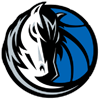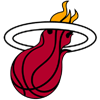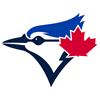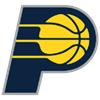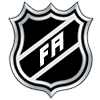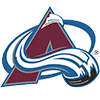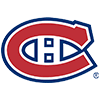It's time for Part 2 of our Season Preview series, and it'll be the Central Division getting the once-over this week. With three strong teams mostly intact from last year and big moves made by other clubs, the Central should be a fantasy powerhouse from top to bottom. It could very well end up being the most competitive division this season.
Dallas Stars
Perhaps the most well-rounded team in the Central, the Stars have all the pieces necessary to remain competitive for years to come. They also benefit from their recent success in prospect development, which has helped them keep the NHL roster competitive without as much reliance on free agency or trades. After falling in the Western Conference Finals last year, there was a fair amount of roster churn, but this is a team still very much in a competitive window.
The biggest loss for the Stars in 2024-25 is the retirement of Joe Pavelski. They also lost Chris Tanev, Jani Hakanpaa and Ryan Suter (buyout) from the blue line as well as depth forwards like Craig Smith and Ty Dellandrea and backup goalie Scott Wedgewood. Nils Lundkvist, Alex Petrovic and Sam Steel were all allowed to test free agency but remained with the Stars. Joining the team this season are defensemen Matt Dumba, Ilya Lyubushkin and Brendan Smith, forward Colin Blackwell and goalies Casey DeSmith and Magnus Hellberg. The Stars will also be hoping for full seasons from top prospects Logan Stankoven and Mavrik Bourque.
Up front, the retirement of Pavelski means the Stars' top line will have a new right wing to join Jason Robertson and Roope Hintz. Wyatt Johnston seems like the most likely option, though Tyler Seguin has also had success in that role. A middle six with Stankoven, Bourque, Jamie Benn, Mason Marchment and Matt Duchene is among the best in the league, both for established talent and for the potential of the rookies. Evgenii Dadonov is a veteran who may start on the fourth line until injuries pop up, while Matej Blumel could be in the mix as a younger forward for a depth role. Expect line combinations to be fluid throughout the year, as the talent and positional balance afford head coach Pete DeBoer plenty of options on how to construct his lineup from one game to the next.
On defense, the Stars boast a one-two punch of Miro Heiskanen and Thomas Harley to lead the way. Whether they'll be together or on separate pairings is yet to be determined -- both are left-shot blueliners, but Heiskanen has remained excellent in all zones when on his off side. Esa Lindell also returns as a defensive ace with modest two-way upside, while the aforementioned Dumba, Lyubushkin and Smith add more pure defense and physicality. This group isn't as deep as the 2023-24 roster ended. Lundkvist could be in for another year as a seventh defenseman barring a good camp, while prospects Lian Bichsel and Christian Kyrou are likely to begin with AHL Texas. Jake Oettinger returns as the No. 1 goalie, and he'll be looking for a bounce-back year after career-worst marks in GAA (2.72) and save percentage (.905) last year. DeSmith, fresh off a successful campaign with the Canucks, will offer a steady No. 2 option to keep Oettinger's workload manageable, while Hellberg is an experienced No. 3 for the organization who should spend most of the year in Cedar Park.
While Dallas was top-10 in goals for per game (third, 3.59), power-play percentage (sixth, 24.2 percent) and penalty-kill percentage (eighth, 82.0 percent), it still feels like this team has another level to reach. Stankoven will be among the most experienced rookies in the NHL in 2024-25 after playing in 24 regular-season contests last year, one shy of the cut-off for Calder eligibility. He also saw action in 19 playoff games. If Johnston continues to grow at just 21 years old and Bourque hits the ground running, the Stars' mix of veteran talent and youth should make them one of the top-scoring teams again. The defense is a concern, but this is a roster that should have its players scattered throughout most fantasy leagues.
Colorado Avalanche
The Avalanche fell short of expectations in 2023-24, exiting in the second round of the playoffs. That said, this is a team that remains among the elites in the league -- having Nathan MacKinnon and Mikko Rantanen up front and Cale Makar on the back end provides a higher floor than most can hope for. There are question marks at forward and in goal for 2024-25, but the Avalanche can be penciled in for a playoff spot and a top-10 offense once again.
The Avalanche lost many players over the offseason, but none of them were game-changers. Zach Parise and Andrew Cogliano retired, while depth forwards Brandon Duhaime, Yakov Trenin, Riley Tufte and Fredrik Olofsson all walked. Sean Walker, Jack Johnson, Caleb Jones and Brad Hunt are gone from the blue line, while Ivan Prosvetov departed for the KHL after losing the backup gig to Justus Annunen. The Avalanche were able to re-sign Jonathan Drouin and Joel Kiviranta, and they welcomed back Jacob MacDonald after his stint in San Jose. Calvin de Haan, Oliver Kylington and Erik Brannstrom will bolster the defensive depth, while Parker Kelly and Matthew Phillips add some bottom-six forward depth. Pierre-Edouard Bellemare also signed a tryout deal with the Avalanche after three years away, though he's not a lock for the roster at 39 years old.
The depth moves were necessary, but the three biggest X-factors up front come much higher in the lineup. Drouin will play on another one-year contract after finding career-best production in 2023-24. Captain Gabriel Landeskog is expected to return shortly after the start of the season after missing two years due to multiple knee surgeries. His workload is unlikely to be like it was before the knee issue -- he'll figure to be a middle-six and power-play option until he proves himself healthy. Valeri Nichushkin, suspended until at least mid-November due to his placement in Stage 3 of the NHL/NHLPA Player Assistance Program, has top-six talent if he can get his off-ice issues under control. He'll have to rebuild trust in the locker room because the Avalanche are unlikely to find a trade partner for the remaining six years of his contract. Prospects like Nikolai Kovalenko and Oskar Olausson may also compete for roster spots in training camp, but the Avalanche are a veteran team that will want to lean on that identity to stay competitive in the Central. In addition to their big-name players, Casey Mittelstadt, Ross Colton and Artturi Lehkonen all figure to play key middle-six roles with power-play time, while Logan O'Connor will look to be a third-line sparkplug again after recovering from hip surgery. Lehkonen will miss part of training camp as he continues to recover from a shoulder injury from last year.
Defensively, the Avalanche remain formidable in the top four with a pairing of Makar and Devon Toews leading the way. The second pairing of Samuel Girard and Josh Manson is also quite strong for its role, though this is a team that could still miss the upside of Bowen Byram, who was dealt away at last season's trade deadline. The third-pairing spots and the depth defensemen roles are up for grabs among the free-agent signings Kylington, Brannstrom and de Haan. Keaton Middleton and Sam Malinski could also be factors there. MacDonald is an interesting on-ice player, as he's spent time as a bottom-four defenseman and fourth-line forward in recent years, giving head coach Jared Bednar an extra option for flexibility, though it's unlikely to matter much in fantasy. Alexandar Georgiev still has a tenuous grip on the No. 1 job in goal, mostly due to experience. He's played in 125 regular-season games over the last two years, but a 3.02 GAA and a .897 save percentage from last season were not encouraging marks. Annunen improved greatly year-over-year and could push this to a timeshare situation if he finds more success in his age-24 campaign.
For fantasy managers, getting a piece of the Avalanche's offense and power-play unit is a good early-round building block. Rostering one of MacKinnon, Rantanen or Makar is a safe bet, and getting two of them is a steal. There isn't as much proven depth to work with, but it doesn't hurt to consider the middle-six players and second-pairing blueliners when filling out the back end of your roster. Georgiev may not help your ratios much in goal, but if he continues to handle a starter's workload, he'll offer plenty of wins behind a team poised to compete for the division title.
Winnipeg Jets
Not much has changed for the Jets after an embarrassing first-round exit to the Avalanche. This is still a strong team, but without making many improvements over the offseason, it's easy to see them drop to the middle of the pack in the Central Division, though having Connor Hellebuyck in goal will likely keep them from falling too far. The biggest change will be behind the bench, with Scott Arniel poised for his second NHL head coaching gig and his first since the Blue Jackets fired him in January of 2012.
The Jets lost trade-deadline acquisitions Sean Monahan (Columbus) and Tyler Toffoli (San Jose) in free agency, as well as backup goalies Laurent Brossoit (Chicago) and Collin Delia (Edmonton). Defenseman Brenden Dillon (New Jersey) also walked. The Jets were able to re-sign Colin Miller while also bringing in goalies Kaapo Kahkonen and Eric Comrie, forwards Jaret Anderson-Dolan and Mason Shaw and blueliners Haydn Fleury and Dylan Coghlan to retool the depth. Just before training camp, restricted free agent Cole Perfetti remains unsigned, but he is in Winnipeg and training with teammates, so the concern of him missing time is low.
Perfetti, Mark Scheifele, Nikolaj Ehlers and Kyle Connor will all fill top-six spots in 2024-25. The last two spots for that group are expected to go to Gabriel Vilardi and Vladislav Namestnikov. Compared to the other offenses of top teams in the Central, this isn't a particularly impressive group, though it offers solid two-way play and a safe floor for scoring and power-play production. The highly effective third line of Nino Niederreiter, Adam Lowry and Mason Appleton returns for another year, while Anderson-Dolan and Shaw will battle with David Gustafsson, Alex Iafallo, Rasmus Kupari, Morgan Barron and Axel Jonsson-Fjallby to fill out the fourth line and depth spots. There are few NHL-ready prospects in the Jets' pipeline, and Kupari would have the most upside of the forwards in competition for the fourth line had he not been limited to one assist in 28 games last season. Of the forwards in the system most likely to alter the current plans, Brad Lambert is a name to keep an eye on this year.
The blue line will look a little different without Dillon's sandpaper, but Josh Morrissey remains a decent No. 1 fantasy defenseman who can chip in across categories. Neal Pionk can do the same as a No. 3 or 4 fantasy blueliner. Dylan DeMelo is a lock for a top-four role as a stay-at-home option. Miller should be a near-everyday player, but there's less certainty for Dylan Samberg, Fleury, Logan Stanley and Ville Heinola competing for two spots on the left side of the Jets' defense. Coghlan would likely slot in as a seventh defenseman. It's a camp battle to watch, particularly with Heinola, who has the most offensive upside of the rearguards that aren't guaranteed to begin the year in the NHL. As mentioned above, Hellebuyck, fresh off his second Vezina win, will once again be a workhorse in goal. Kahkonen and Comrie are both experienced backups, but neither has done much to impress the league at large over the last few years, and they're unlikely to see enough of a workload to justify rostering in fantasy.
It's tough to see the Jets keeping pace in the Central Division this year after they finished with a 52-24-6 record (110 points) in 2023-24. They'll still be a solid team with fantasy contributors throughout, but on paper, this is a wild-card team. There's too much reliance on older prospects and minor leaguers to fill out the depth. If you can't get a piece of the top-six or one of Morrissey or Pionk, you're better off looking elsewhere in the late rounds of your drafts.
Nashville Predators
Wow. That's all that needs to be said about what general manager Barry Trotz pulled off on July 1, luring Steven Stamkos away from the Lightning and Jonathan Marchessault from the Golden Knights. Giving term to a pair of players in their mid-30s may prove risky in the long run, but this was an all-in move from a new regime to keep the Predators competitive in the only division that featured four teams with 99-plus points last year.
In addition to Stamkos and Marchessault, defenseman Brady Skjei and goalie Scott Wedgewood were also signed. Alexandre Carrier re-signed with Nashville, while depth moves were made for Jake Lucchini, Vinnie Hinostroza, Matt Murray and Kieffer Bellows. Ryan McDonagh was traded back to the Lightning in the offseason, and the Predators also lost goalie Kevin Lankinen, defenseman Tyson Barrie and forwards Anthony Beauvillier, Kiefer Sherwood and Jason Zucker to free agency, but it's fair to say the players coming in more than make up for those losses. Later in the summer, the Predators traded away Cody Glass and Yaroslav Askarov, acquiring Jordan Frasca, Magnus Chrona and David Edstrom to restock the prospect ranks at AHL Milwaukee.
The Predators should be among the leaders in shots this year with a top-six that boasts Stamkos, Marchessault and Filip Forsberg, as well as complementary playmakers like Ryan O'Reilly and Gustav Nyquist. There will be plenty of intrigue among all five players on draft day, especially the likely four who will be on the first power-play unit (Stamkos, Marchessault, O'Reilly, Forsberg). Down the lineup, the most interesting positional battle is for the second-line center. It comes down to Colton Sissons and Thomas Novak. Sissons is a reliable two-way player, while Novak has more offensive upside but has also seen more sheltered usage in the last two years. Both could feature on the second power-play unit. Younger players like Juuso Parssinen, Luke Evangelista and Philip Tomasino will be in contention for depth roles alongside veterans Mark Jankowski, Michael McCarron and Cole Smith. A prospect of note to have a chance of being an NHL player this year is Zachary L'Heureux, but he is likely to spend most of the year in the AHL.
Nashville's blue line got materially better with the signing of Skjei to play a second-pairing role behind perennial Norris contender Roman Josi. Dante Fabbro and Carrier have also displayed two-way upside during their careers. The Predators boast a number of bruisers on the blue line as well with Jeremy Lauzon, Luke Schenn and Kevin Gravel among the more physical depth options. Spencer Stastney and Marc Del Gaizo are younger options for those roles, but the Predators opened their competitive window wide with an aggressive summer, so expect the veterans to prevail as long as they take care of their own zone. Juuse Saros is the goalie of the now and the near future for the Predators after he signed an eight-year extension. Wedgewood is a career backup and solid No. 2 option to replace Lankinen, though the Predators' moves in goal ultimately led to the trade of a top goalie prospect in Askarov, who will get a fresh start in San Jose. Chrona, the goalie who came to Nashville in that deal, will be organizational depth.
If you're a Predators fan, this is the most exciting year since they made the Stanley Cup Finals in 2017. This is a team that was built to be heavy for a few years, and it will still carry that identity in its depth, but there is a newfound star power that could put the franchise on an upward trajectory for years to come. You probably won't see a Hart Trophy candidate from here -- it's offense by committee -- but this is a team without a glaring weakness. For the record, the Predators' highest point total in a season is 117, and it wouldn't be shocking to see this year's incarnation give that 2017-18 club a run for its money if everything goes right.
St. Louis Blues
Credit where credit is due -- the Blues saw a chance to improve their roster and did it, signing both Dylan Holloway and Philip Broberg to offer sheets to pry them away from the Oilers. It's an aggressive move rarely seen in the NHL, but it served to give the Blues more NHL-ready options. At the same time, it's fair to say those moves won't be enough to get the Blues back on top in the Central Division after their 92-point finish last year saw them six points adrift of a wild-card spot.
The Blues weren't active in free agency, instead restocking their depth via trades. Fourth-line center Radek Faksa and middle-six forwards Mathieu Joseph and Alexandre Texier were all brought in with trades, while Kevin Hayes was shipped out to Pittsburgh in the same fashion. Marco Scandella remains an unsigned free agent and Kasperi Kapanen was re-signed after testing the market. Pierre-Olivier Joseph, Mathieu's brother, was brought in to supplement the defensive depth, as was Ryan Suter following his buyout by the Stars. Forward Pavel Buchnevich received a six-year extension. The biggest loss is not yet a permanent one, as defenseman Torey Krug was diagnosed with pre-arthritic changes in his ankle and will miss the entire year after undergoing surgery. His status for 2025-26 is uncertain -- given the nature of his injury, it's not clear if he'll play again while remaining under contract through 2026-27.
The Blues' top six is essentially unchanged from last season, which isn't exactly encouraging news for a team that ranked 24th in goals per game (2.85). Buchnevich and Robert Thomas are the stars of the team, while Jordan Kyrou is a solid player and Brayden Schenn, Jake Neighbours and Brandon Saad can be useful in short bursts in fantasy. In the bottom six, Mathieu Joseph and Holloway appear to have the most upside, while Oskar Sundqvist, Texier and Faksa are mostly defensive options. Kapanen, Alexei Toropchenko, Nikita Alexandrov, Zachary Bolduc and Nathan Walker will compete to fill out the depth spots, with Bolduc carrying the most long-term scoring upside.
The loss of Krug for this year will have a seismic impact on the power play and top four on defense. Look for some combination of Justin Faulk, Scott Perunovich and Broberg to fill the power-play void. Faulk is the best all-around blueliner of the bunch, while Nick Leddy and Colton Parayko also often have enough offense to make themselves depth options in fantasy. Suter, Pierre-Olivier Joseph, Tyler Tucker and Matt Kessel will be third-pairing options, though none of them are likely to score enough to help fantasy managers. The goaltending tandem figures to be the same as last year, with Jordan Binnington leading the way and Joel Hofer as the backup. Binnington's 2.84 GAA and .913 save percentage in 2023-24 were his best numbers in three years, but the team in front of him makes it look like those are best-case-scenario stats for this year. Hofer, at 24 years old, could grow into a larger role after going 15-12-1 with a 2.65 GAA and a .913 save percentage over 30 games last year.
The Blues have been middle-of-the-road at best for years, and it looks like more of the same is on the way. They'll be looking for growth from Holloway, Perunovich, Broberg, Neighbours and Hofer, but many of the rest of the players on the roster are in or past their prime. The Blues' ability to make the playoffs likely will have more to do with the failures of their division rivals than their own success, and if they can't improve their offense, there won't be much reason for fantasy managers to keep a close eye on this roster.
Utah Hockey Club
Nothing like that new-car smell. Sure, the parts are mostly the same as before, but the former Arizona Coyotes have moved north, and new owner Ryan Smith showed no hesitation in letting general manager Bill Armstrong put a fresh coat of paint on the roster. With the NHL coming to Utah, it's time for this youth-laden roster to make some noise after an active offseason filled with moves for veterans to help the core along.
Utah lost Travis Boyd and Travis Dermott in free agency, which is unlikely to have much of a ripple effect. They traded for Mikhail Sergachev from the Lightning, at the expense of J.J. Moser and prospect forward Conor Geekie. John Marino also came via trade from the Devils for draft picks. Beyond the trades, Utah wasn't particularly busy. In July, the club flipped Jan Jenik for Egor Sokolov. Defenseman Ian Cole and forward Kevin Stenlund were signed to fill depth roles, but most of the growth for Utah will come from prospects.
Up front, this is still Clayton Keller's team. He's put up 162 points over his last 160 games, and he could be set to exceed the point-per-game mark for the second time if he gets a little more help from his teammates. Nick Schmaltz should also play on the top line. Center depth is interesting for Utah, with Logan Cooley, Barrett Hayton and Jack McBain representing young options, while Nick Bjugstad, Liam O'Brien and Stenlund are experienced veterans who can move up the lineup in a pinch. Alex Kerfoot can also move between center and wing. Among the wingers, there are plenty of breakout candidates in Dylan Guenther, Josh Doan and Matias Maccelli, while the sandpapery Lawson Crouse and Michael Carcone are also back from last season. Kailer Yamamoto will be in camp on a tryout, but he's unlikely to be more than a bottom-six option if he gets a full contract.
The trades did a lot to give Utah's defense a boost. Sergachev is an automatic top-pairing option and should be on the power play, though Sean Durzi has also had success there despite his troubles with staying out of the penalty box. Durzi also signed a four-year extension this offseason. Marino should slot onto the second pairing, while Cole is a third-pairing option. Juuso Valimaki is in a make-or-break season given Utah's expected step forward -- if he doesn't follow, he'll be left behind. Michael Kesselring showed well as a rookie last year, while Maksymilian Szuber and Vladislav Kolyachonok are among the young blueliners in competition for a spot. Victor Soderstrom signed overseas on a two-year contract with Brynas IF, and given his inability to become an NHLer at 23 years old, he will need to rebuild his value in Sweden. Veteran Robert Bortuzzo also signed in late August, though he's more of a seventh defenseman given Utah's strength on the right side of the blue line. Connor Ingram and Karel Vejmelka will be the goalies, and they spent most of last season in an even-split tandem. One of them could take over as the starter if they go on a run, but neither should be expected to play more than 50 games.
The biggest difference between Arizona to Utah is the backing of a new owner. It's a fresh start for the franchise in a new location, and if this roster builds on the step forward it took in 2023-24, Salt Lake City will be buzzing for its newest professional team. That may not include a playoff spot, but this is a team that should give a good fight to any opponent -- last year, the Coyotes were shut out just six times and rarely looked fully out of any game.
Minnesota Wild
It's the final voyage for Marc-Andre Fleury, but the Wild haven't put together a team that's built to stay afloat. There are some players worth targeting in fantasy, but the roster's depth and deficiencies leave far more questions than answers heading into 2024-25.
The losses this offseason were minimal -- Mason Shaw and Dakota Mermis left in free agency, Vinni Lettieri was dealt to Boston for Jakub Lauko and Alex Goligoski retired. Yakov Trenin, Travis Boyd, Graeme Clarke, Devin Shore and Reese Johnson were all signed as forward depth, while the defense is virtually unchanged from last year. Marat Khusnutdinov came over from the KHL late last year, and Liam Ohgren may be ready to make the jump to the NHL as well. The team also signed AHLers Cameron Crotty, Troy Grosenick, Ben Jones, Joseph Cecconi, Brendan Gaunce, Adam Raska and Samuel Walker, but none of them should be considered likely for NHL time. The Wild's quiet offseason is due to the team entering the last year of being severely hamstrung by the continued cap penalties stemming from the buyouts of Zach Parise and Ryan Suter, which account for over $14.7 million of dead cap space. It'll be tough to stay competitive in a tight division when you're building a roster around $72-73 million while everyone else is much closer to the ceiling at $88 million.
The good news for the Wild is that they have two true star players up front in Kirill Kaprizov and Matt Boldy. They can also complement those players with Mats Zuccarello and Joel Eriksson Ek, while Marco Rossi is poised for another year of growth after a 40-point rookie year. Ryan Hartman and Marcus Foligno are useful veterans who can hit their way onto deeper fantasy rosters, while Marcus Johansson is a quiet top-six player. Frederick Gaudreau should be a steady bottom-six center, but the rise of prospects like Khusnutdinov will hamper his usefulness. Trenin is the best of the free-agent additions and the only one likely to fill a full-time role.
Aside from Goligoski's retirement, the Wild's defense looks the same as last year. Brock Faber is a burgeoning superstar on the blue line, and he offers significant upside while paired with a stay-at-home ace like Jonas Brodin. Jared Spurgeon and Jacob Middleton are a fine second pairing, with Spurgeon potentially being a power-play option if he is fully recovered from a hip injury that ended his 2023-24 in January. Declan Chisholm, Zach Bogosian and Jon Merrill are fine third-pairing options, and Chisholm boasts a chance at power-play time as well, but none of them will generate much fantasy buzz. As mentioned in the lede, Fleury is in his final year, set to play the bulk of 2024-25 at age 40. He's a legend of the game and the goalie position, but last year was one of the worst of his career. It'll likely be a tandem in the crease for Minnesota. Filip Gustavsson will get the first crack at sharing the workload with Fleury, but another poor year for Gustavsson could allow the Jesper Wallstedt era to start early. If this turns into a three-goalie rotation, it'll be tough to roster any of them in redraft formats, and only Wallstedt has long-term appeal in dynasty.
This isn't going to be the Wild's year -- the deck is stacked against them, though that's of their own doing. There's still turnover that needs to happen, and it's tough to trust general manager Bill Guerin to make the right choices when building a roster for NHL-level speed and talent. It's also unfair to fully write him off since he has yet to play with a full salary cap. The Wild could benefit from shedding a little grit and finding room for skilled prospects or reclamation projects, with Lauko being a good start in that regard. Next year (2025-26) should be better when the Parise and Suter buyouts account for under $2 million of dead cap space.
Chicago Blackhawks
There is plenty of room for growth with the 2024-25 Blackhawks. One more year of experience for Connor Bedard will help, as will the continued progress of many other prospects. Chicago went big on signing free-agent wingers, which will create competition in camp and throughout the season, while also allowing some prospects to get much-needed AHL experience. It won't be a pretty year on the ice, but there's plenty of reason to think the Blackhawks can begin to pull themselves out of the depths of the league, even if they still finish last in the Central.
The early July spending spree saw Tyler Bertuzzi, Teuvo Teravainen, Patrick Maroon and Craig Smith all join Chicago. Ilya Mikheyev was also acquired in a trade with the Canucks. Veterans T.J. Brodie and Alec Martinez were added to the defense, and Laurent Brossoit was brought in for goalie help, though knee surgery to repair a torn meniscus will cost him some time early in the year. Among the departures are Nikita Zaitsev, Jarred Tinordi and Jaycob Megna on defense, as well as forwards Colin Blackwell and Tyler Johnson. The Blackhawks also left Reese Johnson, Mackenzie Entwistle and Taylor Raddysh unqualified, and all departed in free agency. This makes Chicago a much more veteran team than last year, though many of those experienced players will be flipped for assets to help the ongoing rebuild at the trade deadline.
For fantasy purposes, a Chicago forward should be rostered if his name is Bedard or he sees significant ice time with Bedard. That could include wingers Bertuzzi and Teravainen to begin the year, although Taylor Hall -- returning from a torn ACL -- could also be in the mix if he's healthy to begin 2024-25. Philipp Kurashev had success in that role last year and could be a power-play companion for Bedard. Down the middle, there's Andreas Athanasiou, Jason Dickinson and Ryan Donato, with prospect Frank Nazar in the mix to challenge for a roster spot. Mikheyev, Maroon, Nick Foligno and Lukas Reichel are bottom-six options, though Reichel could see AHL time while Smith, Zach Sanford or Joey Anderson fill out the fourth line.
If you can stomach a poor plus-minus rating, Seth Jones is the most useful fantasy blueliner in Chicago. Connor Murphy will play regularly as a defensive specialist. Alex Vlasic showed glimpses of talent as a rookie last year, far outpacing the level of play from Kevin Korchinski, who could be ticketed to AHL Rockford if he starts slow. Brodie and Martinez can eat minutes and mentor younger blueliners like Korchinski, Wyatt Kaiser, Isaak Phillips or Louis Crevier. Artyom Levshunov is a long shot for the NHL roster after sustaining a foot injury that will cost him rookie camp time. The No. 2 overall pick from 2024 should still be in the mix at some point this year, but he may require some AHL time first, though that shouldn't discourage dynasty managers. Petr Mrazek will be the starter in goal after a surprisingly useful 3.04 GAA and .907 save percentage despite an 18-31-4 record over 56 games last year. That was a career-high workload for the oft-injured goalie, which means Brossoit could be in line for more work later in the year once he's recovered from his knee surgery. Arvid Soderblom was among the worst goalies in the league last year, ranking third-worst in save percentage (.880) among netminders with at least 10 appearances, but he's still young enough (25) to improve.
The Blackhawks have the pieces in place to be back to glory in a few years. That doesn't mean this year will be pretty. As fantasy managers, there's not a lot to like in this situation, but it's wise to at least look for hidden gems. Players filling certain roles will still have value in some formats even if they're in over their heads a bit. The Blackhawks should be a little better this year, making them a source of value picks and sleepers rather than a team to ignore completely.
We're halfway through the previews now. Check back Sept. 23 for the Metropolitan Division and Sept. 30 for the Pacific.






